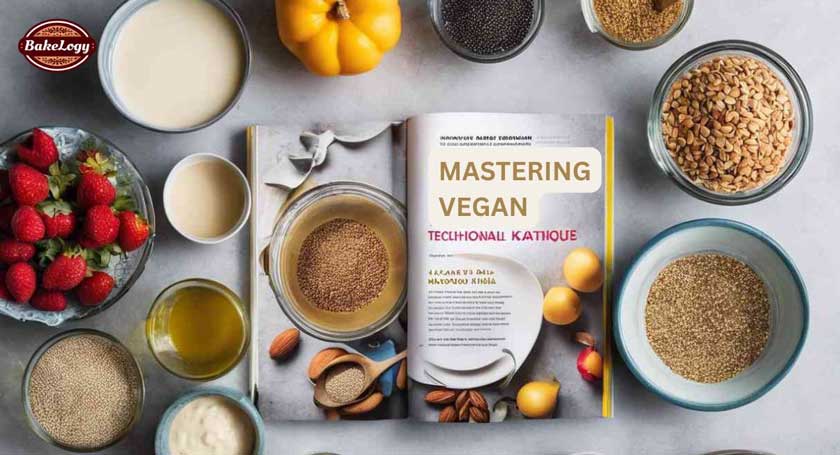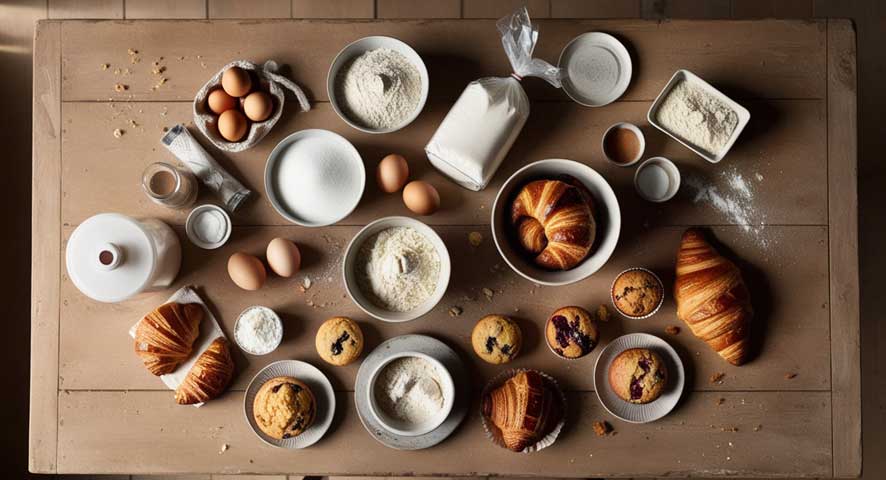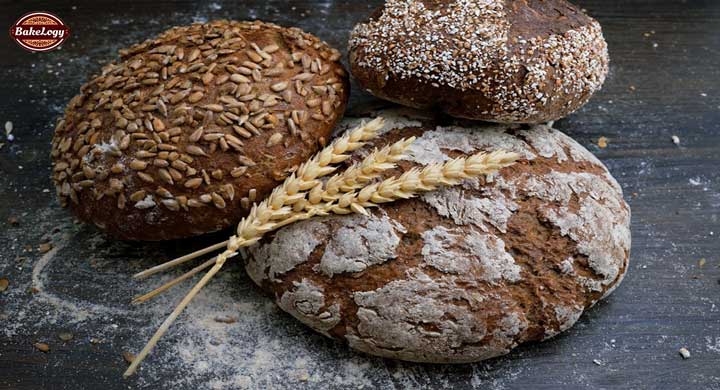Executing Flawless Baking for Special Events: Plan and create perfect treats for any occasion. Learn expert tips and strategies for baking success in this comprehensive guide.
Introduction: The Art of Baking for Special Events
The art of baking for special events encompasses a blend of precision, creativity, and an understanding of the event’s significance. To achieve flawless results, several key factors must be considered, starting with a clear comprehension of the occasion. Whether it’s a wedding, birthday, corporate gathering, or holiday celebration, each event demands a unique approach to baking.
Understanding the Occasion
Understanding the occasion is crucial for selecting appropriate themes, flavors, and designs. For example:
- Weddings often call for elegant, multi-tiered cakes with intricate decorations.
- Birthdays could vary from whimsical designs for children to sophisticated cakes for adults.
- Corporate events might require a professional look, possibly incorporating company logos or colors.
- Holidays usually call for traditional flavors and festive decorations.
Selection of Ingredients
Quality ingredients lay the foundation for successful baked goods. Bakers must prioritize:
- Freshness: Utilize fresh, high-quality ingredients to enhance flavor and texture.
- Suitability: Select ingredients appropriate for the theme and audience. For example, avoid common allergens if necessary and consider dietary restrictions.
Techniques and Tools
Mastery of baking techniques and the use of proper tools can significantly impact the outcome. It is essential to:
- Adhere to precise measurements: Accurate measuring impacts the balance of flavors and textures.
- Use appropriate tools: From mixers to baking pans, the right tools ensure even baking and professional presentation.
Decoration and Presentation
Finally, the decoration and presentation elevate the baked goods from simple desserts to focal points of the event. Consider:
- Aesthetics: Align the presentation with the event’s theme and desired atmosphere.
- Practicality: Ensure that the designs are not only visually appealing but also practical for serving and consumption.
Executing flawless baking for special events involves a comprehensive approach, from understanding the occasion to mastering techniques and focusing on aesthetics. By cultivating these skills and paying attention to detail, bakers can create memorable and delightful experiences for any special event.
Understanding the Basics: Ingredients and Equipment
Successfully baking for special events hinges on a fundamental understanding of essential ingredients and equipment. This knowledge will lay the foundation for achieving consistent, high-quality results.
Essential Ingredients
- Flour
- All-purpose flour is versatile for most recipes while cake flour is preferred for producing tender, delicate cakes.
- Whole-wheat flour adds a distinct flavor and a denser texture.
- Sugar
- Granulated sugar is standard for most recipes.
- Brown sugar adds moisture and a deeper flavor.
- Confectioners’ sugar is ideal for icings and some delicate baked goods.
- Butter
- Unsalted butter allows greater control over the recipe’s salt content.
- Margarine or shortening may be used but can alter texture and flavor.
- Eggs
- Large eggs are typically specified in recipes.
- Eggs add structure, leavening, color, and flavor.
- Leavening Agents
- Baking powder activates with moisture and heat.
- Baking soda requires an acid to activate.
- Yeast for bread and pastries creates a rise through fermentation.
- Dairy
- Milk and buttermilk add moisture and tenderness.
- Cream contributes to richness and flavor.
Critical Equipment
- Mixing Bowls
- Stainless steel or glass bowls are preferred for their durability and non-reactive properties.
=> Mixing Bowls
- Stainless steel or glass bowls are preferred for their durability and non-reactive properties.
- Measuring Tools
- Accurate measuring cups and spoons for dry and liquid ingredients are essential.
- A kitchen scale ensures precision, especially for professional-quality baking.
- Mixers
- A stand mixer offers versatility and power, while a hand mixer is suitable for lighter tasks.
- Paddles, whisks, and dough hooks attachments should be utilized as needed.
- Baking Pans
- High-quality aluminum or non-stick pans in various sizes for cakes, cookies, and bread.
- Specialty pans such as muffin tins and loaf pans for specific recipes.
- Oven
- A reliable oven with accurate temperature settings is crucial.
- An oven thermometer can help ensure precise baking conditions.
- Cooling Racks
- These are necessary for properly cooling baked goods to avoid sogginess and maintain texture.
- Pastry Tools
- Rolling pins, pastry brushes, and dough scrapers are critical for handling and preparing doughs.
- Piping bags and tips for precise icing and decoration.
Understanding these components will empower bakers to create refined, consistent baked goods for any special event. Proper selection and handling of these ingredients and equipment will significantly influence the final product’s quality and presentation.
Planning Your Menu: Choosing the Right Recipes
When planning the menu, it is crucial to select recipes that align with the event’s theme and the guests’ preferences. Efforts should be directed toward a balanced assortment of flavors and textures, ensuring overall enjoyment.
Consider Your Audience
- Dietary Restrictions: Identify any dietary restrictions such as gluten-free, dairy-free, or vegan, and incorporate suitable alternatives.
- Preferences: Obtain insights into guests’ preferences to include popular choices and avoid disliked ingredients.
Theme Alignment
- Event Theme: Choose recipes that complement the event theme, whether it’s a rustic wedding, a corporate breakfast, or a child’s birthday party.
- Seasonal Ingredients: Incorporate seasonal ingredients to enhance freshness and resonate with the time of year.
Balancing the Menu
- Diverse Flavors: Aim for a mix of sweet, savory, and tangy flavors to cater to varied tastes.
- Varied Textures: Combine different textures such as crunchy, creamy, and fluffy to offer a rich sensory experience.
Recipe Complexity
- Skill Level: Select recipes matching the baker’s skill level to ensure quality and reduce stress.
- Time Constraints: Factor in time availability, avoiding overly intricate recipes if time is limited.
Portion Planning
- Guest Count: Estimate portions based on the number of guests to avoid shortages.
- Serving Style: Decide on individual servings versus self-serve options, impacting recipe selection and presentation.
Trial Runs
- Test Bakes: Conduct trial runs of unfamiliar recipes to perfect the technique and taste.
- Feedback: Gather feedback to refine recipes before the event.
Logistics
- Ingredient Sourcing: Ensure reliable sources for all ingredients, considering quality and availability.
- Storage: Plan for appropriate storage, keeping perishable items fresh until serving time.
Recipe Documentation
- Clear Instructions: Choose recipes with clear, concise instructions to avoid confusion during preparation.
- Substitutions: Have contingency plans for ingredient substitutions if necessary.
By following these guidelines, one can ensure the selection of appropriate and delightful recipes tailored to the special event’s needs.
Time Management: Creating a Detailed Schedule
Time management is crucial when preparing for a baking project, especially for special events. To achieve a flawless baking experience, one must create a detailed schedule. Here are steps to ensure efficient time allocation:
Pre-Planning
- Define the Scope
- Identify the number and type of items to be baked.
- Consider the complexity and any special dietary requirements.
- Set Deadlines
- Determine the final delivery time for the baked goods.
- Work backward to set intermediate deadlines for each baking phase.
Creating the Schedule
- Ingredient Preparation
- List all ingredients required.
- Allocate time for purchasing and prepping ingredients.
- Baking Phases
- Break down the baking process into phases:
- Mixing
- Proofing (if applicable)
- Baking
- Cooling
- Decorating
- Break down the baking process into phases:
- Allot Specific Time Blocks
- Assign specific time blocks for each phase.
- Consider overlapping tasks that can be completed simultaneously.
- Buffer Time
- Include buffer time for unexpected delays.
Executing the Schedule
- Daily Task List
- Create a daily task list based on the schedule.
- Prioritize tasks according to their importance and deadlines.
- Time Tracking
- Use a time tracking tool or app to monitor progress.
- Adjust the schedule if necessary based on actual progress.
- Regular Check-ins
- Perform regular check-ins to ensure adherence to the schedule.
- Address any deviations promptly.
Post-Baking
- Inspection and Quality Control
- Allocate time for inspecting the final baked goods.
- Fix any imperfections before the final presentation.
- Cleanup
- Ensure to schedule time for cleanup.
- Organize and store baking tools and leftover ingredients.
Tools and Resources
- Calendar Apps
- Utilize calendar apps to keep track of deadlines and tasks.
- Timers
- Use kitchen timers to manage baking and cooling times accurately.
- Project Management Software
- Consider using project management software for larger baking projects.
Using the steps outlined, one can effectively manage time, ensuring that all baking tasks are completed efficiently and impeccably. Effective time management not only improves workflow but also enhances the overall quality of the baked goods.
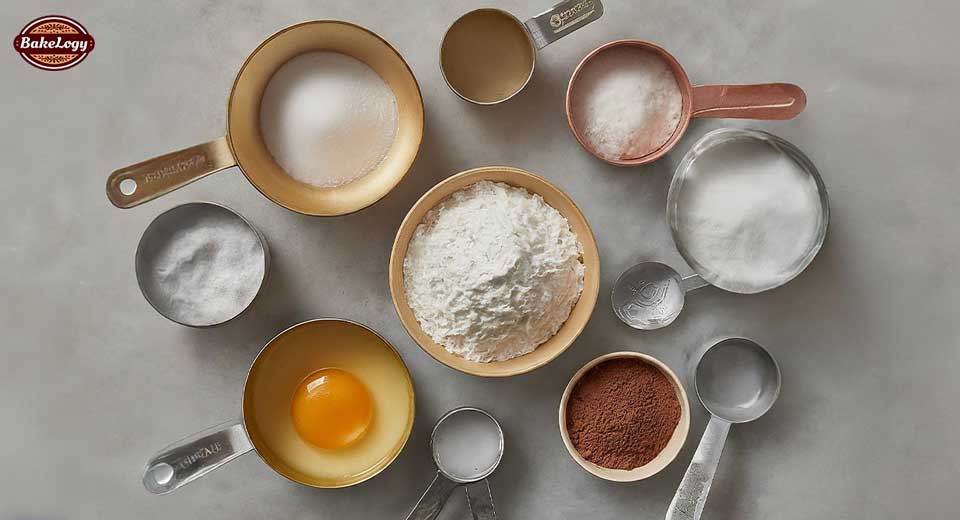
Shopping Tips: Selecting and Sourcing Quality Ingredients
Selecting the right ingredients is foundational to any baking project. Here are critical tips to help ensure the best outcomes:
Read Labels Thoroughly
- Organic vs. Non-Organic: Choose organic ingredients when possible. They often have fewer pesticides and additives.
- Expiration Dates: Verify expiration dates to ensure freshness.
- Ingredients List: Avoid products with artificial preservatives and unnecessary additives.
Prioritize Freshness
- Fruits and Vegetables: Opt for seasonal produce; they are usually fresher and more flavorful.
- Dairy Products: Purchase from stores with high turnover rates to ensure you’re getting the freshest items.
- Flour and Grains: Look for freshly milled flour; it significantly impacts the texture and flavor of baked goods.
Invest in High-Quality Basics
- Flour: Use unbleached and non-bromated flour for better texture and nutrition.
- Sugar: Choose pure cane sugar rather than beet sugar. Organic sugar can be a healthier option.
- Butter: European-style butter, which has a higher fat content, can add richness and flavor.
Source Ethically
- Local Markets: Support local farmers for fresher and possibly more ethically produced goods.
- Fair Trade: Look for Fair Trade-certified ingredients to ensure that workers are treated fairly.
Build a Network of Reliable Suppliers
- Bakery Supply Stores: Frequent specialty stores that cater to bakeries; they often offer higher-quality ingredients in larger quantities.
- Online Retailers: Utilize trusted online platforms for hard-to-find ingredients, but read reviews and ratings carefully.
- Health Food Stores: They often carry a variety of organic and specialized baking ingredients.
Storage Tips Post-Purchase
- Proper Packaging: Store ingredients in airtight containers to maintain freshness.
- Cool, Dry Place: Keep items like flour and sugar in a cool, dry place to prevent spoilage.
- Label and Date: Always label and date your storage containers to track freshness.
Ingredient-Specific Tips
- Leavening Agents: Purchase baking powder and baking soda in small quantities to ensure potency.
- Spices: Whole spices last longer and can be ground as needed. Fresh spices enhance the flavor of baked goods.
- Chocolate: Use high-quality couverture chocolate for superior melt and taste.
A meticulous approach to selecting and sourcing ingredients can elevate the quality of baked goods, making them impeccable for special events.
Preparation Techniques: Ensuring Everything is Ready
Meticulous preparation is the cornerstone of flawless baking for special events. Follow these techniques to ensure every detail is attended to:
- Plan Ahead
- Create a detailed schedule that includes time for ingredient preparation, mixing, baking, decorating, and any unexpected delays.
- Prioritize tasks according to their complexity and required resting or cooling times.
- Ingredient Selection and Measurement
- Source the freshest ingredients possible, ensuring that items like eggs, butter, and dairy are high quality.
- Ensure all ingredients are measured accurately using a kitchen scale for precision, especially for dry ingredients like flour and sugar.
- Read the Recipe Thoroughly
- Before starting, read through the entire recipe to understand the steps and timing involved.
- Identify any techniques or tools needed that might require preparation or practice.
- Organize the Workspace
- Ensure the workspace is clean and clutter-free to prevent mistakes and accidents.
- Arrange ingredients and tools in the order they will be used, known as mise en place, to streamline the baking process.
- Preheat the Oven
- Preheat the oven to the required temperature at least 20 minutes before baking to ensure it is adequately heated.
- Use an oven thermometer to verify the temperature, as built-in thermometers can sometimes be inaccurate.
- Prepare Baking Pans
- Grease, flour, and line baking pans as directed by the recipe to prevent sticking and ensure even baking.
- Choose the right type and size of baking pan to achieve the desired outcome, as variations can affect cooking times and textures.
- Test and Adjust Techniques
- For unfamiliar techniques, conduct a test run on a smaller scale to refine skills without jeopardizing the entire batch.
- Adjust mixing times and methods according to the texture and consistency desired, being mindful of over-mixing or under-mixing.
- Storage and Timing
- If baking in advance, ensure proper storage to maintain freshness, such as wrapping cakes tightly in plastic wrap and storing at the correct temperature.
- Allocate sufficient time for cooling and decorating, particularly for multi-layered or intricate designs.
With careful planning and attention to detail, these preparation techniques will facilitate a smooth and successful baking experience tailored for special events.
Executing the Bake: Step-by-Step Guidance
Preparation
Proper preparation lays the foundation for a successful bake.
- Preheat the Oven: Always preheat the oven to the specified temperature. This ensures an even bake.
- Gather Ingredients: Measure out all ingredients accurately using a digital scale for precision.
- Prep Baking Pans: Grease and line pans as required to prevent sticking.
Mixing
The mixing stage is crucial for achieving the desired texture.
- Dry Ingredients: Sift flour, baking powder, and other dry ingredients to remove lumps and aerate them.
- Wet Ingredients: Cream butter and sugar until light and fluffy before adding eggs, one at a time, beating well after each addition.
- Combine: Gradually mix dry ingredients into the wet mixture until just combined. Avoid overmixing to prevent a dense texture.
Baking
Pay close attention during baking for optimal results.
- Fill Pans: Pour or spoon batter into prepared pans, smoothing the tops with a spatula.
- Set Timer: Place pans on the center rack of the preheated oven. Set a timer to the lower end of the recommended baking time.
- Rotate Pans: Midway through baking, rotate pans to ensure even cooking.
- Test Doneness: Check for doneness using a toothpick or cake tester. Insert it in the center; it should come out clean with a few moist crumbs attached.
Note: Opening the oven door too frequently can cause temperature fluctuations and affect the bake.
Cooling
Proper cooling is essential to maintain baked goods’ structure and flavor.
- Initial Cooling: Allow baked goods to cool in the pan on a wire rack for 10-15 minutes.
- Remove from Pan: Gently remove the baked items from the pan and place them on a wire rack to cool completely.
Storage
Appropriate storage methods extend the freshness of baked goods.
- Short-term storage: Store in an airtight container at room temperature for up to 3 days.
- Long-term storage: Wrap in plastic wrap and foil, and freeze for up to 3 months.
Attention to detail during each step can make the difference between an ordinary and an extraordinary bake.
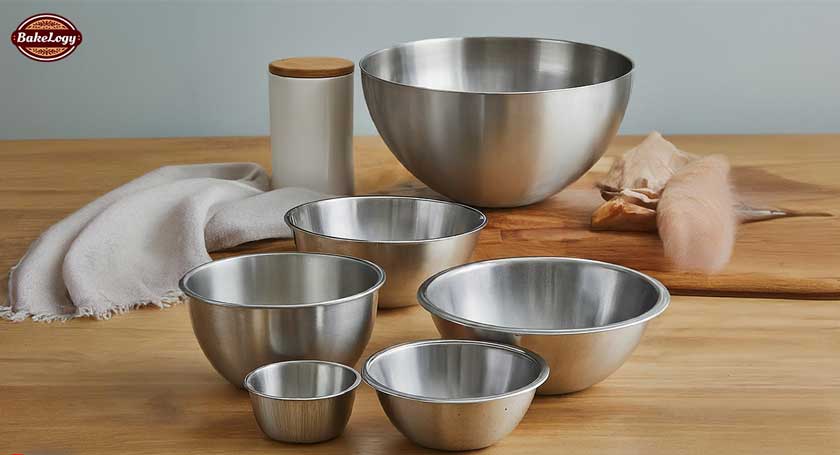
Presentation Matters: Decorating and Styling Your Baked Goods
Presentation is crucial in making baked goods stand out, especially during special events. The focus should be on achieving visually appealing results without sacrificing taste.
- Understanding the Event Theme
- Ensure decorations align with the event’s theme. For weddings, opt for elegant, muted tones and classic designs. For children’s parties, use bright colors and playful motifs.
- Choosing the Right Tools
- Use high-quality piping bags, tips, and molds. Invest in food-safe brushes for intricate designs and edible shimmer for a touch of elegance. Cake stands and decorative boxes enhance the overall presentation.
- Mastering Basic Techniques
- Decorating begins with mastering basic techniques such as piping, glazing, and fondant work. Practice consistent handling of these techniques to ensure clean and professional looks.
- Color Coordination
- Select colors that complement each other and the event’s theme. Use color wheels to avoid clashing tones. Edible dyes should be used sparingly to enhance the overall appearance without overwhelming the design.
- Textural Variety
- Incorporate various textures to make baked goods more visually interesting. Combine smooth fondant with crunchy toppings, or silky ganache with subtle sprinkles to provide a multi-sensory experience.
- Personalization Options
- Personalization can significantly improve appeal. Names, dates, or special messages in elegant fonts add a personal touch. This can be achieved through piping, edible ink, or custom fondant pieces.
- Seasonal Additions
- Adding seasonal elements can elevate the presentation. Use fresh flowers, fruits, or thematic decorations relevant to the time of year. Ensure these elements are food-safe and consistent with the flavor profile.
- Minimalism vs. Complexity
- Decide between minimalist elegance and intricate designs. Minimalism involves clean lines and subtle decorations, while complexity includes detailed patterns and elaborate arrangements.
- Finishing Touches
- Never underestimate the power of finishing touches. Edible glitter, gold leaf, and meticulous glazing can transform the simplest baked goods into showstoppers.
- Display Setup
- The presentation is not only about decoration but also about how goods are arranged. Use multi-tiered stands, coordinated platters, and strategically placed accents to create a cohesive display that draws attention.
By focusing on these elements, bakers can ensure that their creations are not just delicious but also visually stunning, making a lasting impression at any special event.
Troubleshooting Common Issues: Tips for Perfect Results
When baking for special events, even minor issues can impact the final product. Here are expert tips to troubleshoot common problems and achieve flawless results:
1. Uneven Baking
- Check Oven Temperature: Use an oven thermometer to ensure accuracy. Ovens can often be off by 25°F or more.
- Rotate the Pans: Rotate baking pans halfway through cooking to promote even heat distribution.
- Level Racks: Place racks in the center of the oven and avoid overcrowding.
2. Dense Cakes
- Properly Measure Ingredients: Use a kitchen scale to measure flour accurately. Too much flour can cause dense cakes.
- Room Temperature Ingredients: Ensure all ingredients, especially eggs and butter, are at room temperature to facilitate better mixing.
- Do Not Overmix: Mix just until ingredients are combined to avoid overdeveloping gluten.
3. Sinking Cakes
- Do Not Open Oven Door: Opening the oven door too soon can cause cakes to sink. Only check after the minimum baking time.
- Correct Leavening Agents: Verify the freshness of baking powder and baking soda, as expired leavening agents may lead to sinking.
4. Cracked Cheesecake
- Water Bath: Use a water bath to provide consistent moisture and prevent cracking.
- Gradual Cooling: Allow cheesecake to cool in the oven with the door slightly open to prevent drastic temperature changes.
- Avoid Overbaking: Remove cheesecake when the center is still slightly jiggly to prevent overbaking.
5. Tough Cookies
- Do Not Overmix: Mix the dough just enough to combine ingredients. Overmixing can lead to tough cookies.
- Chill Dough: Chill the dough for at least 30 minutes before baking to prevent spreading and achieve the right texture.
- Proper Baking Sheets: Use light-colored, non-stick baking sheets. Darker sheets absorb more heat and can overcook cookies.
6. Flat Breads
- Avoid Overproofing: Overproofed dough can collapse, leading to flat bread. Follow proofing times closely.
- Correct Flour Type: Use bread flour, which has a higher protein content, to give bread structure.
7. Dry Muffins
- Measure Liquid Carefully: Ensure the correct ratio of wet to dry ingredients. Use a liquid measuring cup for accuracy. Muffins & Cupcakes
- Do Not Overbake: Check doneness a few minutes before the suggested baking time.
- Add Moist Ingredients: Incorporate ingredients like yogurt or fruit to enhance moisture.
8. Lumpy Frosting
- Sift Sugar: Sift powdered sugar before adding to avoid lumps.
- Cream Butter Properly: Make sure butter is smooth and creamy before adding other ingredients.
- Gradual Mixing: Add sugar gradually while beating at low speed to ensure a smooth texture.
These troubleshooting tips empower bakers to address common problems, ensuring that special event baking delivers professional-quality results every time.
Serving and Storing: Keeping Your Treats Fresh
Proper serving and storage are crucial to ensure baked goods maintain their quality and flavor. Following the correct procedures can make a significant difference in freshness and presentation.
Serving Tips
- Timing Is Key
- Bake as close to the event as possible. Freshly baked items typically taste best within 24 hours.
- Presentation
- Use elegant platters or cake stands for a visually appealing display.
- Pre-slice items like cakes or pies to make serving more efficient and maintain the presentation.
- Temperature
- Ensure baked goods are served at the appropriate temperature. Warm bread or cookies are more inviting, while chilled desserts can be more refreshing.
Storing Techniques
- Immediate Cooling
- Allow items to cool completely before storing. This prevents condensation that can lead to sogginess.
- Airtight Containers
- Use airtight containers to shield against air and moisture. Glass or plastic containers with secure locks are preferable.
- Freezing
- For longer storage, freezing is an excellent option. Wrap each item tightly in plastic wrap, then place it in a freezer bag. Label with the date for tracking.
Specific Item Guidelines
- Cakes
- For frosted cakes, use cake domes to protect the icing and prevent drying. Unfrosted layers can be wrapped in plastic wrap and stored at room temperature for up to two days or in the fridge for up to one week.
- Cookies
- Store cookies in a single layer, separated by parchment paper, within an airtight container. They can be kept at room temperature for up to a week or frozen for up to three months.
- Breads and Rolls
- Wrap in a clean towel and store in a bread box for short-term storage. For longer periods, wrap in foil and freeze.
Best Practices
- Labeling
- Always label stored goods with dates to monitor freshness and avoid consuming expired items.
- Reheating
- Reheat items like bread or cookies at a low oven temperature to revive their original texture and aroma without drying them out.
By following these guidelines, one can ensure that all baked goods served at special events are fresh, delicious, and presentable. Proper serving and storing techniques can elevate the overall experience for the guests, adding value to the effort invested in creating these treats.
Health and Safety: Ensuring a Hygienic Cooking Environment
Ensuring a hygienic cooking environment is paramount for executing flawless baking, especially for special events. Here are guidelines to maintain health and safety standards.
Personal Hygiene
- Handwashing: Hands should be washed thoroughly with soap and warm water before starting, after handling raw ingredients, and after using the restroom.
- Appropriate Attire: Baker should wear clean clothes, use aprons, and cover hair with a hairnet or cap to prevent contamination.
- No Jewelry: Avoid wearing rings, bracelets, or other jewelry that can harbor bacteria or fall into the food.
Clean Work Area
- Surface Sanitization: Countertops, cutting boards, and utensils should be sanitized using a solution of water and bleach (1 tablespoon bleach per gallon of water). Rinse with clean water before use.
- Segregation: Use separate utensils and cutting boards for raw and cooked ingredients to prevent cross-contamination.
- Dishwashing: Clean dishes immediately after use with hot soapy water or a dishwasher.
Ingredient Management
- Fresh Ingredients: Ensure all ingredients are fresh and within their use-by dates. Expired or contaminated ingredients significantly increase the risk of foodborne illness.
- Proper Storage: Store ingredients at appropriate temperatures—refrigerate perishables, and store dry goods in a cool, dry place in airtight containers to prevent spoilage and pest infestation.
- Labeling: Label and date all stored ingredients to keep track of freshness and ensure efficient stock rotation.
Equipment Maintenance
- Appliance Cleanliness: Regularly clean and maintain mixers, ovens, refrigerators, and other kitchen equipment. A detailed cleaning schedule should be followed to ensure all appliances function efficiently.
- Knife Safety: Keep knives sharp and stored in a safe place to prevent accidents. Use a knife block or magnetic strip rather than leaving them loose in a drawer.
- Temperature Monitoring: Use a food thermometer to ensure baked goods reach safe internal temperatures (e.g., 165°F for most baked items).
Waste Management
- Efficient Disposal: Dispose of kitchen waste immediately to avoid accumulation. Use separate bins for recyclable and non-recyclable waste.
- Spill Control: Clean spills immediately to prevent slips and the spread of bacteria. Use disinfectant for thorough cleaning.
Pest Control
- Regular Inspections: Conduct regular inspections for signs of pests (e.g., droppings, gnaw marks). Address any issues promptly with professional pest control services if necessary.
- Sealed Premises: Make sure doors, windows, and other entry points are sealed to prevent pests from entering the kitchen area.
Closing Thoughts: Enhancing Your Baking Skills for Future Events
To master the art of baking for special events, continuous improvement is essential. Taking time to refine techniques and expand knowledge can make a significant difference in the quality and consistency of baked goods.
Practice Makes Perfect
Regularly practicing different baking techniques can elevate proficiency. Experiment with various recipes, ingredients, and baking methods. Focus on mastering fundamental skills such as:
- Measuring ingredients accurately
- Ensuring proper mixing and blending
- Achieving the right consistency in batters and doughs
- Understanding the importance of temperature control
Learn from Mistakes
Mistakes offer valuable learning experiences. Analyze what went wrong, whether it’s under-baking, over-mixing, or incorrect ingredient ratios. Keeping a detailed baking log can help track progress and identify patterns in errors to avoid in the future.
Seek Feedback
Constructive criticism can provide insights into areas that need improvement. Sharing baked goods with friends, family, or even at local baking clubs can yield honest opinions. Pay attention to comments on taste, texture, and presentation.
Stay Updated with Trends
The baking world is ever-evolving. Staying updated with current trends can provide fresh ideas and inspiration. Follow reputable baking blogs, subscribe to culinary magazines, and participate in online baking communities.
Invest in Quality Equipment
High-quality tools and equipment can significantly affect the outcome of baked goods. Invest in durable baking pans, reliable mixers, and accurate measuring tools. Ensure all equipment is well-maintained and used correctly.
Take Professional Courses
Consider enrolling in baking courses or workshops. Professional instruction can provide advanced techniques and specialized knowledge. Online platforms offer flexibility, while local culinary schools provide hands-on experience.
Experiment with Ingredients
Exploring new ingredients and flavor combinations can enhance creativity. Try incorporating seasonal produce, exotic spices, and unique extracts. Understanding how different ingredients interact can result in innovative and delicious baked goods.
Understand the Science Behind Baking
A thorough understanding of the science behind baking helps in troubleshooting and perfecting recipes. Learn about the role of different ingredients, as well as how factors like humidity and altitude affect baking.
By focusing on these areas, bakers can continuously enhance their skills, leading to consistently exceptional results in future special events.


